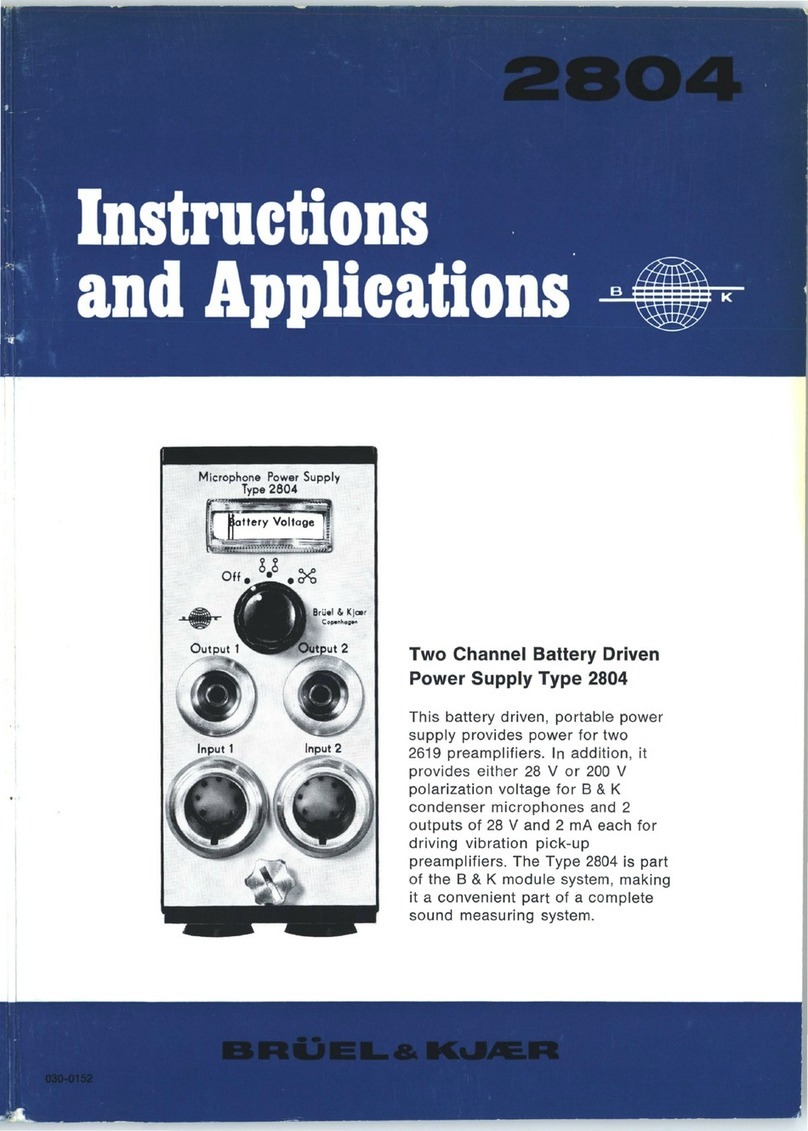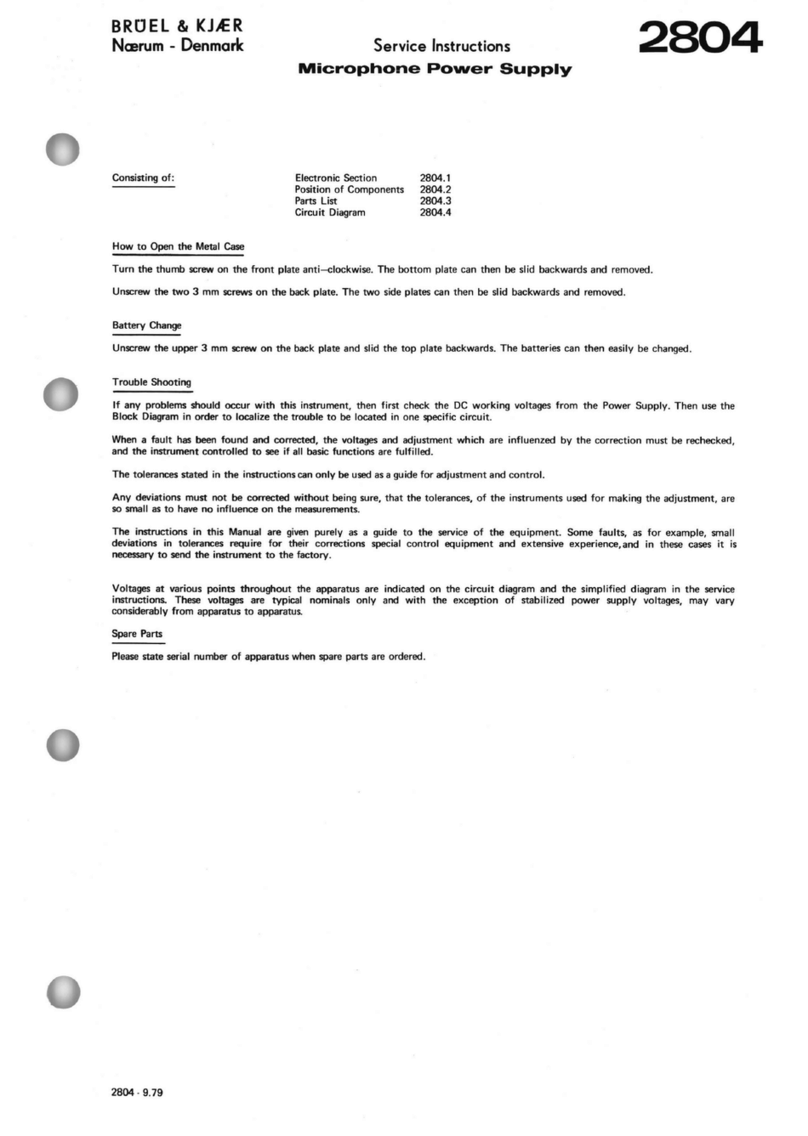
1.
INTRODUCTION
The
Two
Channel Microphone Power Supply Type 2807
is
a compact
instrument
of
modular construction designed
for
use
with
the B & K Micro-
phone Preamplifiers Type 2615, 2618, 2619 and 2627.
It
supplies stabilized
voltages
to
po'N'er
the
preamplifiers and accompanying condenser micro-
phones and
has
two
amplifier
channels
to
convert the
output
impedance
of
the preamplifiers
to
a
low
impedance
so
that
long cables may
be
used
to
connect recording
or
measuring instrumentation. The amplifiers
have
a
linear frequency response which
is
flat
to
within
±0.2 dB
from
2 Hz
to
200kHz
and have a gain
of
approximately
unity.
A separate
multi-turn
potentiometer at the
input
of
each
amplifier enables
input
signals
to
be
attenuated
by
more than
40
dB. The cross-talk between the
two
amplifiers
is
better than
-60
dB.
The
two
channels
of
the 2807 may either be
used
independently
of
one
another,
or
they may be automatically or remotely switched enabling the
output
of
both
channels
to
be monitored using one
set
of
recording
or
measuring instrumentation.
Automatic
switching
is
accomplished using a
relay operated
by
an
internal
multivibrator.
The switching frequency
is
approximately 2 Hz. For remote switching
the
relay
can
be operated
by
grounding
an
EXT.
CONTROL
using either
an
external switch,
or
the two-
channel selector
of
the 2305 Level Recorder. The advantage
of
using the
Level Recorder
for
this purpose
is
that
the
output
from
both
channels can
be recorded simultaneously on frequency calibrated paper.
The 2807 may also be employed
as
an
impedance converter
for
vibration
measurements.
For
this
purpose the 2807 can be used together
with
the
Vibration
Preamplifier Type
2623
and the Power Supply
ZR
0024 or
with
the high
input
impedance Microphone Preamplifiers
Type
2615, 2619, and
2627.
3





























